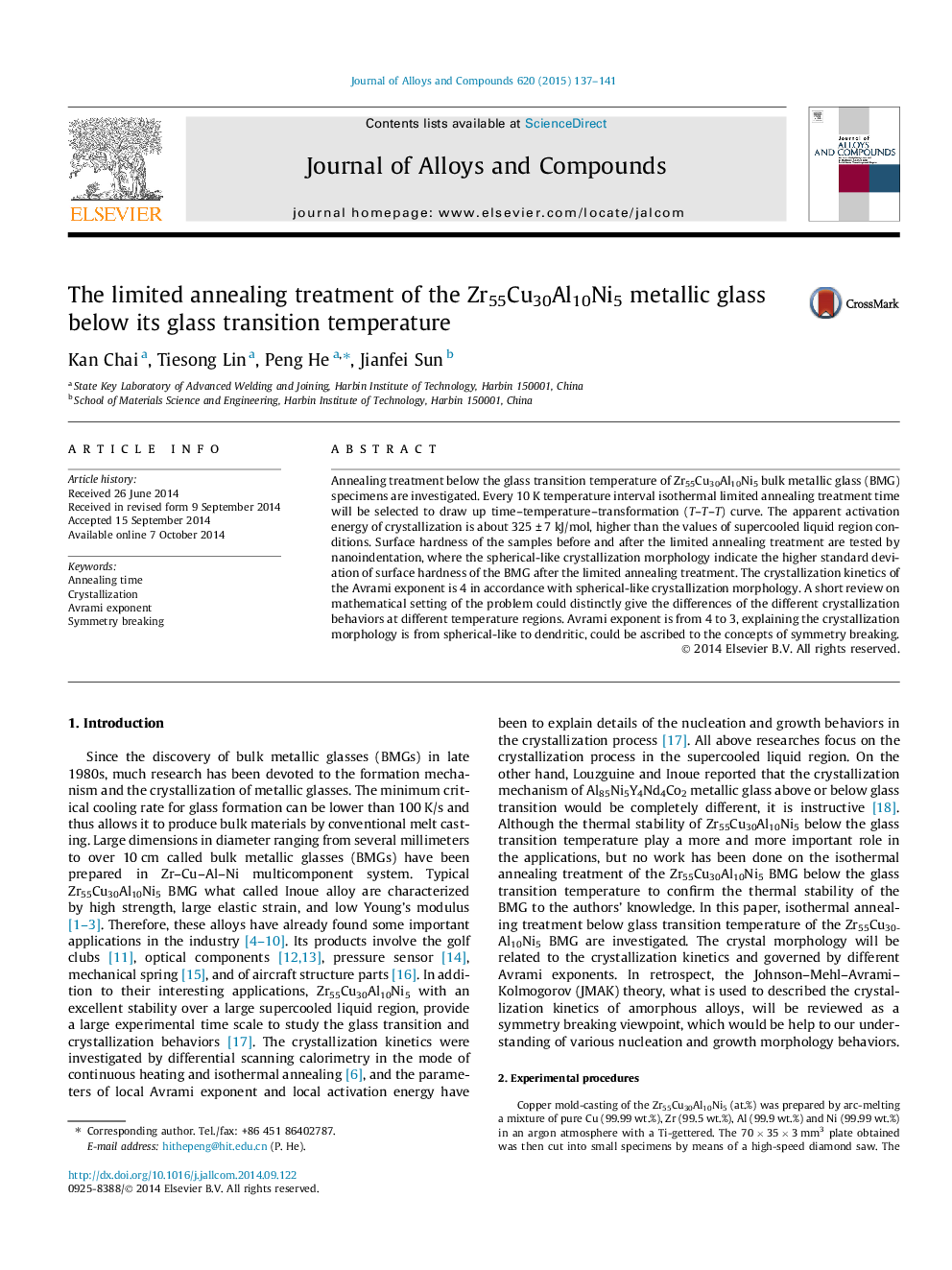| Article ID | Journal | Published Year | Pages | File Type |
|---|---|---|---|---|
| 1610155 | Journal of Alloys and Compounds | 2015 | 5 Pages |
•Isothermal limited annealing treatment of the BMG specimens are carried out in vacuum quartz tubes.•We give limited annealing treatment time at the temperature range between 603 K and 663 K every 10 K temperature interval.•It draws up time–temperature–transformation (T–T–T) curve based on the limited annealing treatment time.•JMAK theory on crystallization of the BMG is re-interpreted by using symmetry breaking concept.
Annealing treatment below the glass transition temperature of Zr55Cu30Al10Ni5 bulk metallic glass (BMG) specimens are investigated. Every 10 K temperature interval isothermal limited annealing treatment time will be selected to draw up time–temperature–transformation (T–T–T) curve. The apparent activation energy of crystallization is about 325 ± 7 kJ/mol, higher than the values of supercooled liquid region conditions. Surface hardness of the samples before and after the limited annealing treatment are tested by nanoindentation, where the spherical-like crystallization morphology indicate the higher standard deviation of surface hardness of the BMG after the limited annealing treatment. The crystallization kinetics of the Avrami exponent is 4 in accordance with spherical-like crystallization morphology. A short review on mathematical setting of the problem could distinctly give the differences of the different crystallization behaviors at different temperature regions. Avrami exponent is from 4 to 3, explaining the crystallization morphology is from spherical-like to dendritic, could be ascribed to the concepts of symmetry breaking.
